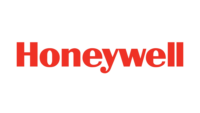Global gypsum demand is likely to recover in tandem with broader recovery in the construction sector, according to a market intelligence study. According to the study, global gypsum market is likely to grow at 5% CAGR through 2030, with growth in the later part compensating for the current sluggishness.
Increasing adoption of digital solutions and spending on technological advancements has been driving the construction sector. As a direct outcome of to this, cement and drywall production has surged, boosting scope for gypsum application.
Gypsum is widely used in the manufacture of wallboard, plaster of Paris, cement, and as a hardening retarder used in Portland cement. Its use as a soil conditioner also is expected to rise, as famers look for effective methods of improving fertility and crop yield.
It is effectively used to change the composition and structure of heavy clay soils, especially the ones extremely weathered due to intensive practice of crop production.
Study intends to evaluate the prevailing trends and uncover hidden opportunities for the market players. Some of the key takeaways from the report are as follows:
- The gypsum market value is expected to surpass US$ 3.6 Bn by 2020
- Asia Pacific will remain a lucrative market through the forecast period
- Strong demand in China and India will offset waning demand in mature markets
- In North America, demand from the U.S. remains critical to overall growth
- Sales uptick is likely especially on account of increasing cement production worldwide
“Gypsum is a vital material used in the production of various construction materials. It helps in controlling the rate of hardening of cement. It is therefore expected that increasing construction activities will result in surging demand in the market,” said a report lead analyst.
COVID-19 Impact on Gypsum Market
Significant drop in demand is expected owing to the unprecedented COVID-19 outbreak. Through the major part of 2020, operations in the market were hampered. Its effects are likely to percolate in the subsequent year as pandemic has caused serious dent in demand for gypsum.
As construction activities, which account for majority sales in the market, remain halted amid social distancing regulations, gypsum sales are unlikely to pick up. Nonetheless study projects recovery once economic activities return to normal.
Downturn witnessed by major cement producing countries will result in stunted growth in the market. Among rest of the world, the markets in Japan, Korea, and Australia too are affected however gradual recovery is expected in these pockets in the coming months.
Who is Winning?
The presence of several international companies, aiming at capacity expansion as resulted in market consolidation. Competition however is likely to remain high through the course of the forecast period.
Besides competition from peers, these companies are reeling under threat from substitutes, which is why spending on research and development is significantly high. Market players also will exhibit high focus on strategic collaboration to gain competitive advantage.
Some of the leading companies operating in the market are Knauf Gips KG, Saint Gobain, Boral Limited, National Gypsum Company (U.S.), Lafarge, YOSHINO GYPSUM CO., LTD, Beijing New Building Materials PLC, Mada Gypsum, National Gypsum (Saudi Arabia), JONOUB GYPSUM among others









